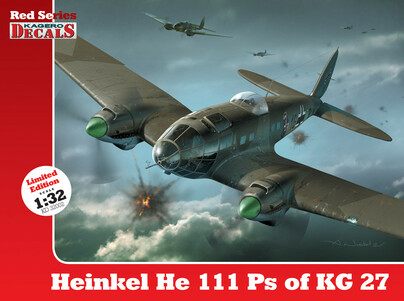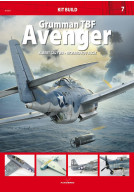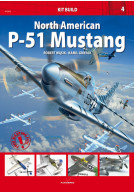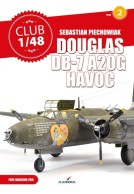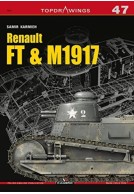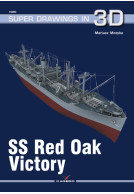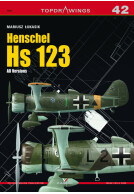Google Books previews are unavailable because you have chosen to turn off third party cookies for enhanced content. Visit our cookies page to review your cookie settings.
Heinkel He 111 Ps of KG 27 (Paperback)
Imprint: Kagero
Series: Kagero Decals Red Series
Pages: 12
Illustrations: Full colour throughout
ISBN: 9788362878314
Published: 15th May 2012
Series: Kagero Decals Red Series
Pages: 12
Illustrations: Full colour throughout
ISBN: 9788362878314
Published: 15th May 2012
You'll be £10.99 closer to your next £10.00 credit when you purchase Heinkel He 111 Ps of KG 27. What's this?
+£4.99 UK Delivery or free UK delivery if order is over £40
(click here for international delivery rates)
Need a currency converter? Check XE.com for live rates
(click here for international delivery rates)
Need a currency converter? Check XE.com for live rates
The Heinkel He 111 was a German aircraft designed by Siegfried and Walter Günter in the early 1930s in violation of the Treaty of Versailles. Often described as a "Wolf in sheep's clothing", it masqueraded as a transport aircraft, though its actual purpose was to provide the Luftwaffe with a fast medium bomber.Perhaps the best-recognised German bomber due to the distinctive, extensively glazed, bullet-shaped "greenhouse" nose of later versions, the Heinkel was the most numerous and the primary Luftwaffe bomber during the early stages of World War II. It fared well until the Battle of Britain, when its weak defensive armament, relatively low speed, and poor manoeuvrability were exposed. Nevertheless, it proved capable of sustaining heavy damage and remaining airborne. As the war progressed, the He 111 was used in a variety of roles on every front in the European Theatre. It was used as a strategic bomber during the Battle of Britain, a torpedo bomber during the Battle of the Atlantic, and a medium bomber and a transport aircraft on the Western, Eastern, Mediterranean, Middle Eastern, and North African Fronts.Although constantly upgraded, the Heinkel He 111 became obsolete during the latter part of the war. It was intended to be replaced by the Luftwaffe's Bomber B project, but the delays and eventual cancellation of the project forced the Luftwaffe to continue using the He 111 until the end of the war. Manufacture ceased in 1944, at which point, piston-engine bomber production was largely halted in favour of fighter aircraft. With the German bomber force defunct, the He 111 was used for transport and logistics.The design of the Heinkel endured after the war in the CASA 2.111. The Spanish received a batch of He 111H-16s in 1943 along with an agreement to licence-build Spanish versions. Its airframe was produced in Spain under license by Construcciones Aeronáuticas SA. The design differed significantly in powerplant only. The Heinkel's descendant continued in service until 1973, when it was retired.This book contains three striking schemes from the 1939-1940 period. All planes are presented and described in this 12 page, full-colour guidebook, which also includes two photos of one of the aircraft. All machines carry attractive artwork applied by the crews. None of them has been previously done by other decal manufacturers.
Other titles in the series...
Other titles in Kagero...







